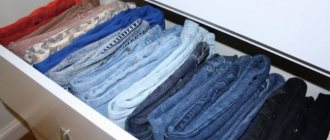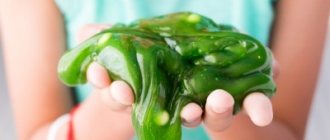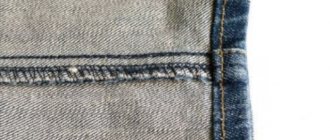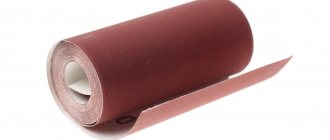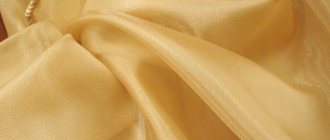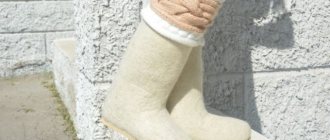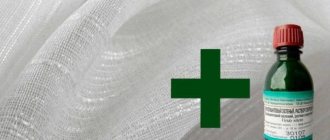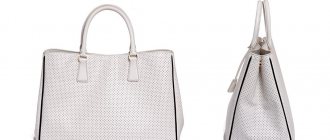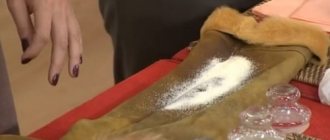Why starch things
Many modern women do not understand how to starch fabric at home, because store shelves are overflowing with a variety of care products. However, the starching procedure has a huge number of advantages that other means do not have. As a result:
- durable fabric that does not tear as much as non-starched fabric;
- things are not stretched and generally hold their shape better;
- when stains get in, they are not absorbed, but remain on the surface, making them easy to wash off;
Starched linen
- all contaminants remain on the upper protective layer of starch, and the starch itself dissolves very well in water, so the item can be washed very easily;
- starch to some extent replaces bleach, but is more gentle on fabrics;
- things smell fresh.
Why did you starch laundry before?
The main function of this procedure is additional protection against possible contamination, increasing the density and rigidity of the material. Starched fabric gains additional properties:
- becomes denser;
- wrinkles much less;
- the shape of the product is retained longer;
- dirt does not penetrate into the middle of the fabric fibers, so clothes are easier to wash.
Interesting: Why did monks used to shave the top of their heads?
Clothes are sometimes starched even now, but for this purpose ready-made products have been invented that are sprayed onto the fabric during the ironing process
Starching has an important drawback - it reduces breathability. The fact is that there are gaps between the fibers, which, as a result of the starch treatment procedure, are filled with the mixture. When drying, starch forms a film into which air no longer penetrates and the fabric does not “breathe.” Therefore, summer clothes, underwear and, in general, clothes that fit close to the body are starched extremely rarely.
If you find an error, please select a piece of text and press Ctrl+Enter.
Is it possible to do without starch?
A solution with starch is not suitable in all cases; for example, for synthetic fabrics it would be more effective to replace it. Possible options:
- sugar. Diluted with water 1:2. It is important to dissolve the sugar in the water before it boils, otherwise it may burn and give things a reddish tint;
- gelatin. Per liter of water from 2 to 4 spoons (depending on the desired hardness of the fabric). Gelatin swells in water, after which you need to heat the water until it is completely dissolved. Thanks to this method, fabrics become more shiny;
- PVA. The most common glue can help give products a rigid shape. Proportions - 1 part glue to 2 parts water;
- ready-made mixtures, boron powder. Most often they are sold in stores in the form of sprays and are quite convenient to use; some of them can be added to the washing machine.
You might be interested in this About patterns and sewing procedures for a-line dresses
Preparing the mixture
How to starch a dress without using starch
To make the material tougher and less susceptible to dirt, it is not necessary to use starch. Moreover, there are fabrics for which starch is “contraindicated” - for example, satin may turn yellow after such a procedure, so it is treated only with gelatin. There are other substances that can replace starch: sugar and PVA glue. Such methods are not used for clothing, but they are perfect for knitted napkins, ribbons for making flowers, and knitted hats.
How to achieve the desired effect without starch?
We use sugar
6 tbsp should be dissolved in 500 ml of water. l. sugar and boil the syrup. The solution should be removed from the heat as soon as it boils, otherwise the liquid will turn yellowish and cannot be used. Without waiting for the solution to cool, you should immerse the product in it and leave it there for 7-10 minutes.
It should be remembered that napkins and tablecloths treated in this way may attract ants and other insects.
Gelatin
You will need 2 tsp. gelatin and 2 glasses of water. First, the crystals should be diluted in a small amount of cold water, and when the particles swell, add the rest of the water. Place the container on the stove, bring the mixture to a boil and turn off the gas. When the liquid has cooled a little, you should put the dress in it and wait a little until it is completely soaked.
Glue
PVA glue should be dissolved in water in a ratio of 1 to 2 and mix the mixture well. The product must be dipped into the composition, given its final shape and left to dry.
How to starch knitted clothes:
What things should not be starched?
Despite the large number of advantages, not everything can be starched. In some cases, you can only do harm:
- casual summer clothes. Due to the fact that starch envelops the fabric with a hard layer, it allows air to pass through worse, so the body will not breathe;
- underwear and children's clothing. These things must remain hygroscopic and soft so as not to harm the skin in any way;
- dark and colored things. Due to the bleaching effect, the color of the fabric may change greatly or become stained;
- synthetic fabrics. They will not become starchy, so it is better to use alternative methods;
- embroidery. Starch can stick the threads together and the embroidery will be damaged.
Starched pillowcases
The hard way
A highly concentrated starch solution will help make the fabric stiff so that it “stands up.” You will need at least 2 tbsp. raw materials per liter of water. Petticoats, cuffs and collars, and textile decor are processed in this way. You can prepare the solution by analogy with the methods described above.
An alternative method using sodium boric salt - borax (you should buy it at the pharmacy):
- dissolve 50 g of starch in a glass of cold water;
- borax in the amount of 1 tsp. dissolve in a glass of hot water and cool;
- Boil three glasses of water;
- pour in starch, stirring;
- pour in the borax solution;
- leave for 2 hours.
To treat the product, immerse it in the prepared solution and wait a few minutes until the fabric is completely saturated. Then wring out, dry (not completely) and iron. The product will hold its shape tightly and, thanks to the borax, will gain gloss. What should you do if you need to starch a separate item of clothing, for example, a shirt collar and cuffs? Just dip only these parts into the solution.
What to consider when using starch
How to starch fabric is not a complicated procedure, but it does require some skills and knowledge. Recommendations for starching;
- the procedure must be repeated approximately every 4 washes, but not every time;
- if you squeeze starched fabric, you can get creases, so it’s better not to overdo it;
- for delicate items like lace, it is better to make a solution with rice starch and milk instead of water;
- Only freshly washed items are starched;
- a cloudy solution should not be used if you don’t want to throw it away - you can boil it for 5 minutes;
- the thick mixture can be diluted with water, the main thing is to preheat it;
Starching in a machine
- to obtain shine and smoother smoothing, add a quarter teaspoon of salt to the solution;
- Ironing clothes after the procedure should be slightly damp, and if they have already dried, walk with a damp cloth. To be safe, it is better to cover the starched fabric with gauze and iron it through it;
- things should dry naturally, away from radiators and direct sunlight;
- Sometimes a grayish powder is sold in stores; it cannot be used immediately. This starch is soaked in water, all unnecessary particles settle out, and then the solution is filtered and it is ready for use;
- If you don’t like the result after starching, you should just wash the item.
Basic methods of starching fabric
To starch, there are several step-by-step methods with their own characteristics; this can be done at home:
- soft way. The most gentle with a small proportion of starch. This method is suitable for delicate items such as silk or chiffon items, blouses, bed linen, curtains.
- semi-rigid method. This method is used most often. It is good for all products that should not wrinkle and somehow keep their shape. Used for shirts, tablecloths, lace napkins.
- the hard way. Used for things that must keep their shape clearly. For example: collar crafts, knitted vases, cuffs, petticoats.
You might be interested in DIY sewing trousers with elastic bands for women
Hard method solution
Photo tips on how to starch fabric
Read here How to clean an iron: simple ways to clean modern irons from carbon deposits (135 photos and videos)
Did you like the article? Share 
0
Preparation of the solution
In order to make starching, you need to use a solution. There are a lot of ready-made products on store shelves, but as practice shows, it is better to use home methods.
Important! The starching solution is made from just two ingredients - water and starch. In general, potato, corn or rice starch is used, but the last two do not give a very good lasting result. But potato is perfect. This solution is absorbed very well into the fabric and after ironing creates a protective layer on it.
Each starching method has its own characteristics. For soft, take 1 teaspoon of starch per 150 ml of water; you can even pour this solution into a spray bottle and go over the entire product. For average, 1 tablespoon per 1 liter of water, visually similar to jelly.
Napkin
How to properly starch things with PVA glue
PVA glue is very convenient to use. You don’t need to boil it to get a solution, just take 1 part of glue and add it to 1 part of water. The product is simply lowered into the resulting mixture until it is completely saturated. After this, the item should be taken out and dried. If necessary, iron it like any other starched item.
Vases are starched in a hard way
How to properly dry a starched item
There is nothing complicated in drying such things, the main thing is to remember a few rules:
- natural drying only;
- exposure to direct sunlight is prohibited;
- exposure to low temperatures is prohibited;
- You cannot dry things on a radiator or heater.
Important! If you need it very urgently, you can dry the item using gauze using an iron.
Starched collar
How to iron
Ironing of starched items is recommended to be more delicate than regular ironing, so you need to know some nuances:
- wet things are easier to iron, so after the procedure it is better not to let them dry completely;
- Cuff collars should always be ironed first;
- You cannot use steam on an iron, as things will lose the properties obtained from starch;
- for better ironing, you should add a little salt to the solution, so things will not stick to the iron;
- with a hard starching method, you should not iron things dry so that streaks do not form on them;
- You should always iron through gauze.
You might be interested in How to transfer photos onto fabric yourself
Ironing
Starch gives things a well-groomed appearance. There is no need to purchase expensive new items that increase the rigidity of things. You can learn how to starch fabric at home in this article. A powder of natural origin will cope with a simple task.
How can you starch fabric?
In hypermarkets you can buy special spray, solutions and powders for use in an automatic washing machine. These tools are very convenient to use. The aerosol can must be shaken and sprayed onto the fabric, ironed with a hot iron.
Large items, such as sheets and duvet covers, are best starched in the washing machine using a special powder mixture or solution.
How to properly starch fabric in a washing machine - you can learn about this by reading the instructions for the product.
Any housewife knows that fabric can be starched with starch. It’s better to do this with potato (it’s easier to buy), but you can use corn or rice. Starch can be used to starch any item, be it a sheet or a napkin.
There are other methods of starching that are suitable only for openwork decor. These include starching with sugar, gelatin and PVA glue.

